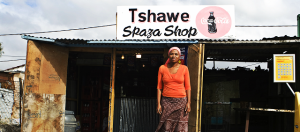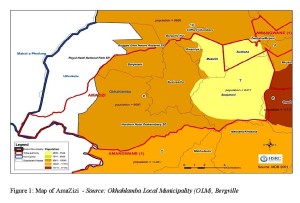IIDE Proceedings 2014 – Dealing With Complexity: Some Critical Reflections Upon Verkerk’s ‘Triple I Model’
The article provides critical reflections upon Dr. M. Verkerk’s ‘Triple I Model’ which aims to guide engineers in their work designing complex systems. The model suggests including stakeholders in the design process, in order to search for inherent values of the designed situation, and to design in an ideal-seeking mode. I do applaud the effort made as such as I do the mentioned three features of the model. However, I have also identified a set of challenges and needs for further development of the model and suggest some avenues for seeking support from the domain of systems thinking.
1. Introduction
The International Institute for Developmental Ethics (IIDE) hosts an Annual Working Conference, where a number of younger and more senior scholars meet to debate issues at the intersection of science, technology ethics and religion as sources for normativity, all related to societal challenges and changes. In past years, H. Dooyeweerd’s philosophical work has played a central role in inspiring and giving rise to many contributions and debates, yet by no means all. A recurring theme for dialogues and research cooperation has been the conceptions of systems thinking, in particular the use of systems methodologies in management.
At the 2014 Annual Working Conference (AWC) of IIDE, a special workshop entitled Dooyeweerdian Thinking meets Systems Thinking was organized, with the purpose of triggering new debate and opening up new avenues for future research. In view of this purpose Dr. Maarten Verkerk was invited to contribute. Dr Verkerk’s profile well matches the theme, as he is affiliated with the Dooyeweerdian school of thought in the Netherlands and is well acquainted with the domain of technology and management. At the workshop he presented the “Triple I Model” (hereafter referred to as 3IM), which aims to offer generic guidance for the design of complex systems. As a follow-up of the discussions at the workshop, I was asked by the chairperson of IIDE to write down my critical reflections upon Verkerk’s 3IM, which will be presented here.
The next section summarizes my understanding of the 3IM and my reflections will follow in section three. In brief, I sympathize with Dr. Verkerk’s efforts, while at the same time noticing some challenges; I suggest some steps towards solving these. The paper ends with some key conclusions to that end. Before moving to my assessment, however, I shall provide an account of my intellectual profile in order to make the reader aware of the kind of spectacles that shaped my assessment of Verkerk’s 3IM.
1.1 My Profile – the reference point of assessment
In several senses my profile is well suited to act as a base for an assessment of 3IM, as I perceive it. Given that the latter aims to guide designers of complex systems, where technology and the social aspects coexist, my broad intellectual and practical profile may offer a relevant reference point, yet not the only one; there is of course a need for several assessments that utilize different reference points.
I have been educated in a number of disciplines, ranging from mathematics, statistics and computer science, through economics, business administration and industrial organization, as well as psychology and sociology, and ending with philosophy, all in a varying range and depth. I have studied postmodern philosophy in France, analytical philosophy in Sweden and have been a keen reader, yet by no means exhaustively, of Dooyeweerd’s thought. I have also been a devoted student of systems science and its derivate systems thinking. I earned a doctorate in industrial organization and I have spent nearly fifteen years in managerial positions, ranging from those of operations analyst and management consultant to line manager and strategic development manager positions at a major international corporation. In all these contexts I have attempted to use my learnings, particularly systems thinking understood as guide to intervention into human, social, public, business and other affairs. As with Verkerk’s 3MI, I have also made some minor attempts to operationalize parts of Dooyeweerd’s thinking in terms of systems-oriented methodology for managerial practice, yet not very successfully. Read more
IIDE Proceedings 2011- Re-Integrating Technology And Economy In Human Life And Society ~ Volume I ~ Contents & Preface
 Preface – See below
Preface – See below
Lindile L. Ndabeni – Innovation Technology and the Challenges of Low- and Medium-tech SMEs: the Case of Forest Products SMEs
Sibonginkosi Mazibuko – People and Parks: Pro-poor Tourism and Small Enterprise Development in the Northern Drakensberg, KwaZulu-Natal, South Africa
Daan F. Toerien – Ignorance and Disregard: the Banes of Sustainable Job Creation in South Africa
Lucius Botes – The Consequences of Small Business Development Support in South Africa: Applying the Sustainable Livelihoods Framework
Lochner Marais, Motshedisi Lephasa, Molefi Lenka, Johan Van Zyl – Business Support in South Africa: A Comparative Programme Evaluation
Aad Van Tilburg, Emma Kambewa – Can the Conflicting Interests of Small-scale Primary Producers and Consumers be Reconciled in Value Chains? The Case of Nile Perch and Rooibos Tea
Gerben Nooteboom, Mario Rutten – Magic Bullets in Development: Assumptions, Teleology and the Popularity of Three Solutions to End Poverty
Henk Jochemsen – Towards Sustainable Food Production: a Normative Analysis of Agrarian Practice
Sytse Strijbos in conversation with Darek Haftor – Re-Integrating Technology and Economy in Human Life and Society: the Past, Present and Future of the IIDE-Research
Information about the International Institute for Development and Ethics
Information about the Annual Working Conferences
Preface
Since 2009 a group of authors from South Africa and the Netherlands have been cooperating in a project on issues of (small) entrepreneurship and development. What follows is a selection of nine research papers that have been presented and discussed in local seminars organized by the International Institute for Development and Ethics(IIDE) at the University of the Free State, Bloemfontein, and/or at the 16th and 17th Annual Working Conferences of the IIDE. The first six papers, mainly authored by (South) African scholars contain an interesting variety of empirical studies, while the following three papers from Dutch researchers have a theoretical focus and a reflective character. This categorization of the papers in empirical studies and theoretical reflections is useful to introduce each of them briefly: Read more
IIDE Proceedings 2011 ~ Vol.I ~ Innovation Technology And The Challenges Of Low- And Medium-Tech SMEs: The Case Of Forest Products SMEs
Introduction
Low- and medium-tech (LMT) small and medium enterprises (SMEs) can be described as low research and development (R & D) performers. In this sector, innovation tends to occur but not on the basis of R & D results. By contrast, innovation in the sector is driven mainly by incremental product change rather than by the application or commercialisation of R & D. Nonetheless, technological upgrading in low- and medium-tech SMEs remains important as such firms can become competitive in the long run and therefore become a potential basis for further economic development. More significant are the large proportions of employment opportunities that are derived from the sector. Typically, the LMT sector deserves particular attention from both researchers and policy makers.
Indeed, the low- and medium-tech SME economy has the potential to stimulate endogenous growth through innovation. Policy attention should therefore focus on supporting and fostering innovation in the sector in order to ensure the greater probability of the survival of the enterprises, with employment opportunities as a positive consequence. More specifically, innovation policy remains central to the success of the LMT economy as this will increase the innovation capacities of LMT enterprises. The objective in this chapter is to explore the development challenges of low- and medium-tech SMEs. The chapter as a whole is structured into four sections of material. The first section introduces the national system of innovation and provides the conceptual framework of the chapter. The second section describes the low- and medium-tech SMEs. The third strand of material focuses on forest-products and is aimed at enhancing our analysis of the LMT sector. The fourth section focuses on the technological challenges of experienced by the low- and medium-tech SME sector.
The National System of Innovation
This particular section introduces the national system of innovation as a conceptual framework in this chapter. The main reason for focusing on the national system of innovation has to do with the fact that most public policies influencing innovation processes or the economy as a whole are still designed and implemented at the national level. The importance of the national system of innovation has partly to do with the fact that such a focus captures the importance of the policy aspects of innovation. It also enables us to identify the boundaries of the system of innovation spatially, sectorally, and in terms of activities (Edquist, 2005). Typically, a sectoral innovation system has to do with a group of firms active in developing and making the sector’s products and generating and utilising the sector’s technologies. A stronger focus on activities increases our knowledge and capacity for explaining the processes of innovation. This may be through asking certain relevant questions, which include which activities of which organisations are important for the development, diffusion or use of specific innovations (Edquist, 2005). The section draws heavily on the works of Fagerberg, Mowery and Nelson (2005).
According to Edquist (2005), a “national system of innovation” refers to the network of institutions in the public and private sectors whose activities and interactions initiate, import and diffuse new technologies. The structure of production and the institutional set-up jointly define the system of innovation. The national innovation systems approach emphasises the importance of strong linkages among these various institutions in improving national innovative and competitive performance (Mowery and Sampat, 2005). Increased inter-institutional collaboration is a characteristic of modern innovation systems. It is implicit in this definition that firms seldom innovate in isolation. Interaction with customers, suppliers, competitors and various other private and public organisations is very important, and a systems perspective is useful in understanding and analysing such interactions (Edquist, 2005).
The main components of systems of innovation are organisations and institutions. These organisations and institutions form the components of systems which are critical in the creation and commercialisation of knowledge (Edquist, 2005). Organisations are important in promoting the creation and dissemination of knowledge as the main sources of innovation (Edquist, 2005). However, and more importantly, the behaviour of organisations is further shaped by institutions such as laws, rules, norms, and routines that constitute incentives to and obstacles against innovation. Read more
IIDE Proceedings 2011 ~ Vol.I ~ People And Parks: Pro-Poor Tourism And Small Enterprise Development In The Northern Drakensberg, Kwazulu-Natal, South Africa
Introduction and background to nature conservation in South Africa
This chapter provides a critical analysis of the economic opportunities and barriers found around the conservation area of the Royal Natal National Park in the northern Drakensberg. The chapter argues that the park and the tourism industry present avenues for viable opportunities for the poor to engage in entrepreneurial practices at levels commensurate with their capital assets in order to reduce poverty and unemployment. However, the extent to which the poor access certain assets depends on a number of factors such as their own knowledge and attitudes, as well as the role of the institutions that govern the daily conduct of people’s lives.
Under the eras of colonialism and apartheid in South Africa, protected areas were largely proclaimed at the expense of the African populations that were forced to make way for them — sometimes with promises of economic benefits. This became the era of fences and fines against those forced out. The protected areas became the preserve of the privileged white minority to the exclusion of the black majority (Child 2004; White Paper 1994; Nkosi and Abbot 2002).
The history of conservation in South Africa is therefore characterised, among other things, by dispossession, exclusion, suppression, deprivation and marginalisation. Because of the racial character of past (conservation) policies, a foundation was laid for contestation, instead of beneficiation, between the parks and local communities, as well as for a sense of loss and poverty within those communities. Conservation areas became a “white man’s space”, as evidenced by the Kruger National Park (Honey 1999:340-344), despite the issuing of promises of economic benefits to the local communities, as the people were forcefully removed from some of these areas (Ramutsindela 2004:108; Bell 1997:95). To this day in South Africa, communities adjacent to conservation areas are largely characterised by mass poverty, unemployment and dependence on natural resources. Besides the low-skills jobs available to them, the selling of handicrafts in the informal sector represents the main form of entrepreneurial participation in tourism – as is the case among the AmaZizi of the northern Drakensberg in KwaZulu-Natal, on whom this article is based.
In the democratic dispensation, the South African government (in the White Paper on the Development and Promotion of Tourism 1996) promotes tourism as one of the routes to job creation and sustainable development. The White Paper states that tourism in South Africa has the potential to generate R40 billion per year and create no less than two million jobs. Nature conservation authorities such as the KZN Ezemvelo Wildlife have also responded to the challenges through the introduction of a community levy where part of the income from the conservation areas is made available to the adjacent communities. Though the concept of the community levy is laudable, it may create unhealthy dependency on the conservation areas by the local communities. It is in this regard that alternatives such as entrepreneurship development are considered. But again, is it possible to identify specific sectors and means by which tourism benefits can be maximised in order to contribute to poverty reduction and unemployment, especially among the AmaZizi in the northern Drakensberg?
The constitutional requirement for South African municipalities to adopt a developmental character and the requirement to implement policies of local economic development, for example, create the necessary institutional framework to provide the poor with opportunities to engage in entrepreneurial activities without necessarily competing with established business. Read more
IIDE Proceedings 2011 ~ Vol.I ~ Ignorance And Disregard: The Banes Of Sustainable Job Creation In South Africa
Introduction
One of the legacies of the apartheid years in South Africa is a persistently high unemployment rate. Since the 1970s South Africa’s performance in dealing with persistent unemployment has been dismal (Du Toit and Koekemoer 2003: 49). This is so despite the fact that the ANC, South Africa’s premier political party, committed itself in 2009 to five priorities – education, health, rural development, the fight against crime, and creating decent work (ANC Today 2009: 1).
Why does unemployment remain so high? Du Plessis and Smit (2007: 1) suggest South Africa experienced ‘jobless’ growth in the 1990s but Bhorat and Cassim (2004: 15) reject this contention. They state: ‘The initial data here make it plain that the economy did not experience an absolute decline in employment. Put differently, applying the notion of “jobless growth” to characterise post-1995 employment trends is simply wrong. However, it is important to note that while we did not have jobless growth in this period, we have clearly had “poor employment growth”. Whatever the precise cause, it is clear that employment did not increase in step with expectations, a huge problem given the high expectations in a new democratic South Africa.’
Many reasons have been cited for poor or jobless growth in South Africa (Du Plessis and Smit 2007: 13-5). These include labour market inflexibility and new labour legislation enacted after 1994 (Barker, 2003: 226-7; Burger and Woolard 2005: 3), a mismatch between the required skills levels, the labour force, and employment opportunities (Burger and Woolard 2005; 21-2; Pauw Oosthuizen and Van der Westhuizen 2008: 45-57), concerns over a perceived increase in the capital intensity of production (Bhorat and Oosthuizen 2006; 239-40; Pauw Oosthuizen and Van der Westhuizen 2008: 45-57), increased concentration in the manufacturing sector (Fedderke and Szalontai 2003: 1), sectoral changes in demand (Bhorat and Oosthuizen 2006: 246; Banerjee et al. 2006: 1-26) and the impacts of the high prevalence of HIV/AIDS in South Africa (Arndt and Lewis 2000: 11; Ford, Lewis and Bates 2002: 10-17).
No one of these explanations relates to the dominant strategic position of South African enterprises or the overall nature of the technology used in the country. It is the contention of this chapter that these two issues are ignored (or perhaps even willfully disregarded) in South Africa, thereby contributing to an inability to understand the essential nature of the persistent unemployment problem. The aim of the chapter is, therefore, to demonstrate that ignorance and/or disregard of the importance of strategic positioning and the nature of the technology applied could result in a systemic inability to overcome the unemployment problems.
To develop the line of reasoning, two fundamental choices of entrepreneurs about strategic positioning and the nature of technology are firstly linked to some seminal thinking. Then a metaphor, namely the playing field, is used to further elucidate these issues. The South African economy is positioned in terms of the playing field and is followed by an analysis of what happens to commodity-producers and workers during globalisation. The South African agricultural industry is used to sketch the dynamics of this process. Reference is made to the ‘Château Margaux paradox’ before the South African wine industry is used as an example of a sustainable low-tech industry. The implications and consequences of the ignorance and disregard of strategic positioning and the nature of technology are then discussed in detail, including the conundrum of balancing the production of commodities, earning foreign exchange, and job creation/destruction. Finally a broad solution is offered for consideration in South Africa and elsewhere. Read more
IIDE Proceedings 2011~ Re-Integrating Technology And Economy In Human Life And Society ~ Volume II ~ Contents & Preface
Preface – See below
Information about the International Institute for Development and Ethics – See below
Information about the Conference Proceedings – See below
Andrew Basden & Hawah Ahmad: Down-to-earth issues in (mandatory) IS use: Part I – Types of Issue
Hawah Ahmad & Andrew Basden: Down-to-earth issues in (mandatory) IS use: Part II – Approach to understand multiple meaning and reveal hidden issues
Samira Atashi & Andrew Basden: Investigating the effects of IS development ethical issues on information systems units
Pieter Lems, Noelle Aarts & Cees van Woerkum: Dealing with differences in framing in multi – actor interactions in water management
Fabian von Scheele & Darek Haftor: Cognitive Distortion Accounted Workload in Service Operations
Sina Joneidy & Andrew Basden: Exploring Dooyeweerd’s aspects for understanding perceived usefulness of information systems
Krishnan Harihara, Subramanian: “Using Dooyweerd’s Aspects to Enrich our Understanding of Idolatry”
Preface
This Volume II, of the 2011 Proceedings of the 17th Annual Working Conference of the International Institute for Development and Ethics, offers seven research papers. Two common items of the first five papers is that they all address various issues of information and communication technology use and that their investigation rests upon Herman Dooyeweerd’s theory of multiple aspects of reality. While the remaining two papers focus inter-human communication and time in human operation, respectively, all seven papers presented here deal with normative aspects of human affairs – in that sense all contributions here address human interest in our world. The papers are introduced shortly, as they appear, in the following.
Andrew Basden and Hawah Ahmad, with their “Down-to-earth issues in (mandatory) IS use: Part I – Types of Issue”, contribute to the discourse about those kinds of information systems that are mandatory in use. Their starting point is that “use is not serviceable as a guide to evaluating the quality of such use as experienced by stakeholders”, as many “down-to-earth issues that are crucial to such quality are overlooked”. They suggest that a new approach is required, which is based on what is meaningful in everyday life, that in turn may be comprehended by means of H. Dooyeweerd’s notion of multiple modalities of human existence. They conclude that such an approach “provides a philosophical underpinning for not only understanding the nature of down-to-earth issues, nor just showing their diversity, but also for explaining why the notion of DTE issues is needed for analysis and understanding of IS use.” Read more






